
Roots
The very essence of textured hair, with its inherent coil and crown, whispers tales of continuity—stories passed down through generations, carried in the very strands that spring from our scalps. To consider what ancient oils moisturize textured hair is to trace a path through ancestral lands and practices, to understand that our hair’s unique structure, far from being a challenge, is a testament to resilience and adaptation, a living archive of human heritage. This exploration acknowledges the deep wisdom held within historical methods of care, recognizing that early communities understood the biological needs of hair long before modern laboratories isolated molecular components.
The natural patterns of textured hair—from tight coils to expansive waves—often create a pathway that resists the easy descent of the scalp’s natural oils. This structural reality means moisture, so vital for the strength and health of hair, can remain closer to the scalp, leaving the lengths vulnerable to dryness. Ancient peoples, with their keen observations of nature and deep connection to their surroundings, intuited this need. They turned to the earth’s bounty, extracting liquid sustenance from plants and seeds to create remedies.
These early formulations provided lubrication and protection for hair, serving as both beauty ritual and practical solution in climates often unforgiving. The understanding of these oils and their application was not a fleeting trend, but a sustained, living tradition, echoing from the source of our collective memory.
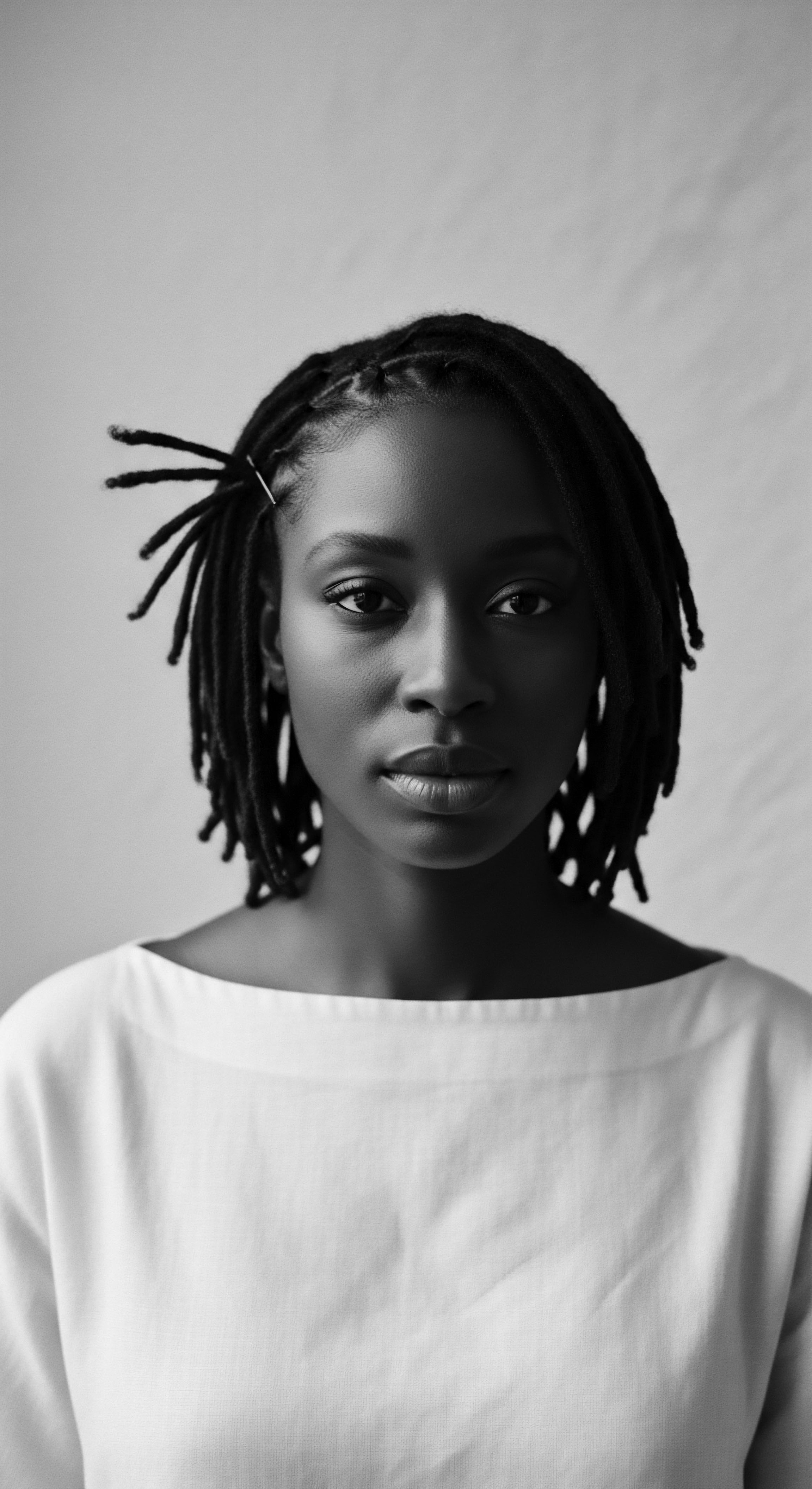
Hair’s Structure and Ancient Nourishment
Textured hair, at its most fundamental level, exhibits a unique elliptical cross-section and varying degrees of curl density. This morphology, a biological fingerprint of ancestry, directly influences how natural sebum travels along the hair shaft. Straight hair, with its round cross-section, allows sebum to distribute with relative ease, offering a continuous protective coating.
Coiled and curly hair, however, presents a different landscape, with twists and turns that hinder this even distribution. This predisposes textured strands to a drier disposition, a reality that ancient cultures navigated with remarkable ingenuity.
Consider the hair follicle itself, a tiny organ nestled beneath the scalp’s surface. Within this follicle, the sebaceous gland produces sebum, a natural oil that lubricates and safeguards the hair. While modern science can delineate the lipid profiles of various oils, ancient communities, through generations of trial and observation, discovered which botanical extracts best mimicked or supplemented this natural protective layer. They understood, with a profound intuitive grasp, that external emollients were not just cosmetic additions but fundamental building blocks for healthy hair.
Ancestral hair care practices reveal an innate understanding of textured hair’s need for external moisture, long before scientific dissection of its unique fiber.
This ancestral wisdom, deeply rooted in the daily lives of Black and mixed-race communities, recognized the hair’s porous nature and its tendency to lose moisture to the atmosphere. The very act of oiling became a shield, a sealant, a way to hold the precious water within each strand. It speaks to a heritage of resourcefulness, using what the land offered to care for one’s physical self. The oils chosen were not random selections; they were plant medicines, often integral to broader systems of holistic wellness.

Early Classifications and the Language of Hair
Before modern classification systems categorized hair types by numbers and letters, communities defined hair through observation, cultural significance, and the sensory experience of touch. The language used to describe textured hair was rooted in its feel, its appearance, its response to care. Terms might refer to the tightness of a coil, the spring of a curl, the thickness of a loc, or the softness achieved through consistent care. These descriptions, passed down verbally, formed a lexicon steeped in cultural identity.
In many African societies, hair was a powerful marker, signifying age, marital status, social standing, tribal affiliation, and even spiritual beliefs. The oils applied were not merely for moisturization but became part of this symbolic language, enhancing the hair’s presentation and durability for intricate styles. For instance, the practice of applying butters and oils before braiding served a dual purpose ❉ to soften the hair for easier manipulation and to seal in moisture, preserving the style for longer periods in often challenging environments. This practical application was a direct outgrowth of an intimate knowledge of textured hair’s needs.
- Shea Butter ❉ Often called “women’s gold” in West Africa, it has been used for centuries to protect skin and hair from sun, wind, and dust, valued for its moisturizing and softening capabilities. Cleopatra herself reportedly used shea oil for skin and hair.
- Coconut Oil ❉ A cornerstone in Ayurvedic traditions for thousands of years, applied from scalp to ends as a pre-shampoo or overnight treatment. Its high lauric acid content helps prevent protein loss.
- Olive Oil ❉ A staple in ancient Mediterranean cultures, valued by Greeks and Egyptians for its nourishing properties and believed to strengthen hair and prevent breakage. Queen Cleopatra purportedly used olive oil in her daily routine.
The oils became part of a shared understanding, a non-verbal agreement within communities about care, beauty, and belonging. The very act of applying oil, often a communal activity, strengthened social bonds and preserved cultural identity. This deep connection between hair, its care, and the broader social fabric stands as a powerful testament to the enduring heritage embedded in every strand.

Ritual
The application of oils to textured hair has always extended beyond simple lubrication; it is a ritual, a connection to a long lineage of care, reflecting an intricate dance between practical technique and cultural expression. These ancient practices shaped not only the health of the hair but also the way it was styled, adorned, and presented to the world. The wisdom of our foremothers understood that proper preparation with oils was essential for manipulation, protection, and the creation of styles that often communicated identity, status, and community affiliation.
Consider the foundational nature of textured hair. Its coiled and porous structure, as previously discussed, demands consistent moisture. Without it, hair can become brittle, prone to breakage, and resistant to styling.
Ancient oils provided the necessary pliability, making hair more manageable for braiding, twisting, and intricate updos that were not merely decorative but often held profound cultural meanings. This systematic approach to care, often passed from elder to child, demonstrates a sophisticated understanding of hair mechanics, even if the language used was not that of contemporary trichology.

Protective Styles and Their Oiled Roots
Protective styles, a hallmark of textured hair care, have deep ancestral roots across the African diaspora. These styles, such as cornrows, twists, and braids, shield the hair from environmental stressors and reduce daily manipulation, thereby minimizing breakage and length loss. The efficacy of these styles is significantly enhanced by the application of oils and butters before, during, and after their creation.
In West African traditions, the use of oils and butters was often paired with protective styles to maintain length and health, particularly in hot, dry climates. The Basara Tribe of T’Chad, for instance, gained recognition for their practice of applying an herb-infused oil mixture, known as Chebe, to their hair, braiding it to retain length. This involves a long, specific process, suggesting a ritualistic significance beyond mere application. Similarly, Ethiopian and Somali women used homemade “hair butter” from whipped animal milk and water, applied with excellent results for hair maintenance.
These methods were not haphazard; they were deliberate, often communal activities. Mothers, daughters, and friends would gather, transforming hair care into moments of bonding, strengthening familial ties while preserving cultural identity. The oils facilitated the intricate braiding patterns, allowing for smoother work and a more comfortable experience, simultaneously imparting moisture and a protective barrier.
| Oil / Butter Shea Butter |
| Region of Traditional Use West Africa (e.g. Ghana, Burkina Faso) |
| Contribution to Styling Softens hair for manipulation, holds styles, moisturizes scalp and strands. |
| Oil / Butter Argan Oil |
| Region of Traditional Use Morocco (Berber communities) |
| Contribution to Styling Adds shine, reduces frizz, aids in taming hair, used as leave-in. |
| Oil / Butter Castor Oil (Jamaican/Haitian Black) |
| Region of Traditional Use Caribbean (African diaspora influence) |
| Contribution to Styling Thick, viscous nature provides hold, moisturizes, prevents dryness, helps manageability. |
| Oil / Butter Chebe (herb-infused oil/fat) |
| Region of Traditional Use Chad (Basara Tribe) |
| Contribution to Styling Fortifies hair, aids length retention, reduces breakage when applied and braided. |
| Oil / Butter These oils served not only as moisturizers but as essential components in the creation and longevity of protective hair styles, a testament to ancestral ingenuity. |
The selection of oil often corresponded to the specific needs of the hair and the climate. In colder European climates, for example, African immigrants often relied heavily on oils for moisture retention to protect against harsh weather, demonstrating the adaptive power of these traditions.

Natural Definition and Traditional Methods
Beyond protective styles, ancient oils were central to defining natural texture and enhancing its inherent beauty. The goal was often not to alter the hair’s pattern, but to allow its coils and curls to present in their fullest, most vibrant form. This was a direct counterpoint to later imposed beauty standards that sought to straighten textured hair.
Ayurvedic practices in India, for instance, emphasize hair oiling as a core component of overall hair health, contributing to smoothness and shine. Here, oils like Coconut Oil and Sesame Oil are massaged into the scalp and applied to lengths, often left for hours or overnight, to nourish and strengthen strands. This ritual, dating back thousands of years, demonstrates a profound belief in supporting the hair’s natural state.
In the Mediterranean, Olive Oil was valued for promoting a lustrous shine and preventing breakage. Its application to the scalp and hair, followed by gentle massage, was a practice deeply embedded in daily routines, long before its scientific properties were understood. These applications were not merely about appearance; they were holistic acts, believed to stimulate hair growth and maintain overall hair vitality.
The ritual of oiling, passed down through generations, represents a communal heritage of care, fostering both hair health and social connection.
This persistent reliance on oils speaks to their enduring effectiveness. Hair care practices, particularly those of Black people across the diaspora, do not persist for thousands of years if they do not provide tangible benefits. The deliberate application of oils, whether for defining curls, preparing for braids, or simply imparting a desirable feel, underscores a sophisticated, experiential knowledge of textured hair’s specific characteristics and its requirements for optimal presentation.
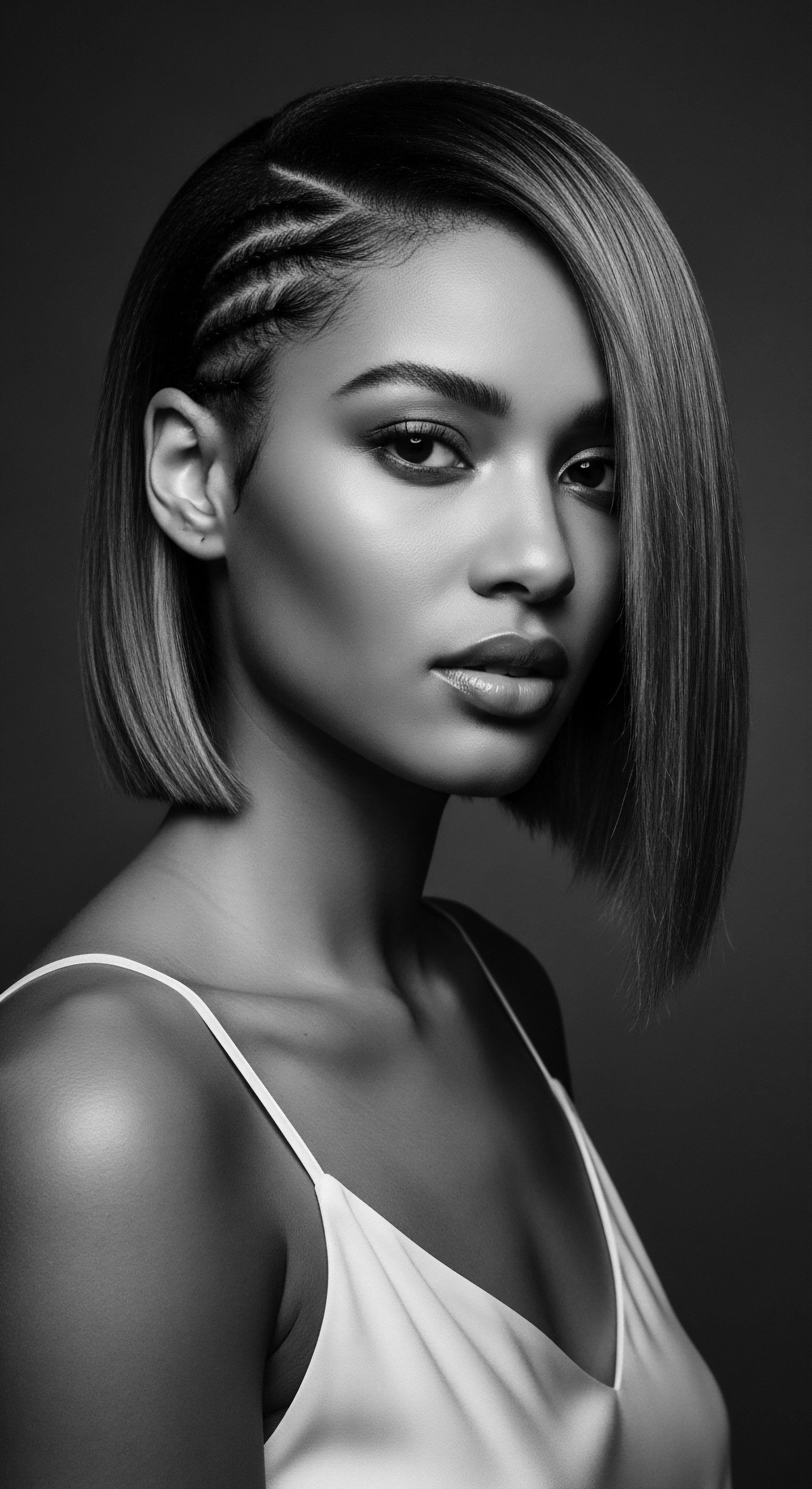
Relay
The historical thread of ancient oils used for textured hair stretches from the earliest known civilizations into our present day, a testament to their enduring efficacy and the wisdom of ancestral practices. Our understanding of these oils, once purely observational and passed through oral traditions, now benefits from the clarifying lens of modern science, which often validates the very methods our foremothers employed. The dialogue between historical application and contemporary scientific understanding allows us to appreciate the profound insight of ancient healers and caregivers.
The very structure of textured hair – its coiled helix and external cuticle architecture – presents a paradox ❉ while robust, it is also prone to dryness due to the uneven distribution of naturally occurring sebum. This biological reality made the external application of lipids, in the form of plant oils and butters, not merely a cosmetic choice but a physiological necessity for moisture retention. This deep-seated need gave rise to the regimens that have survived centuries.
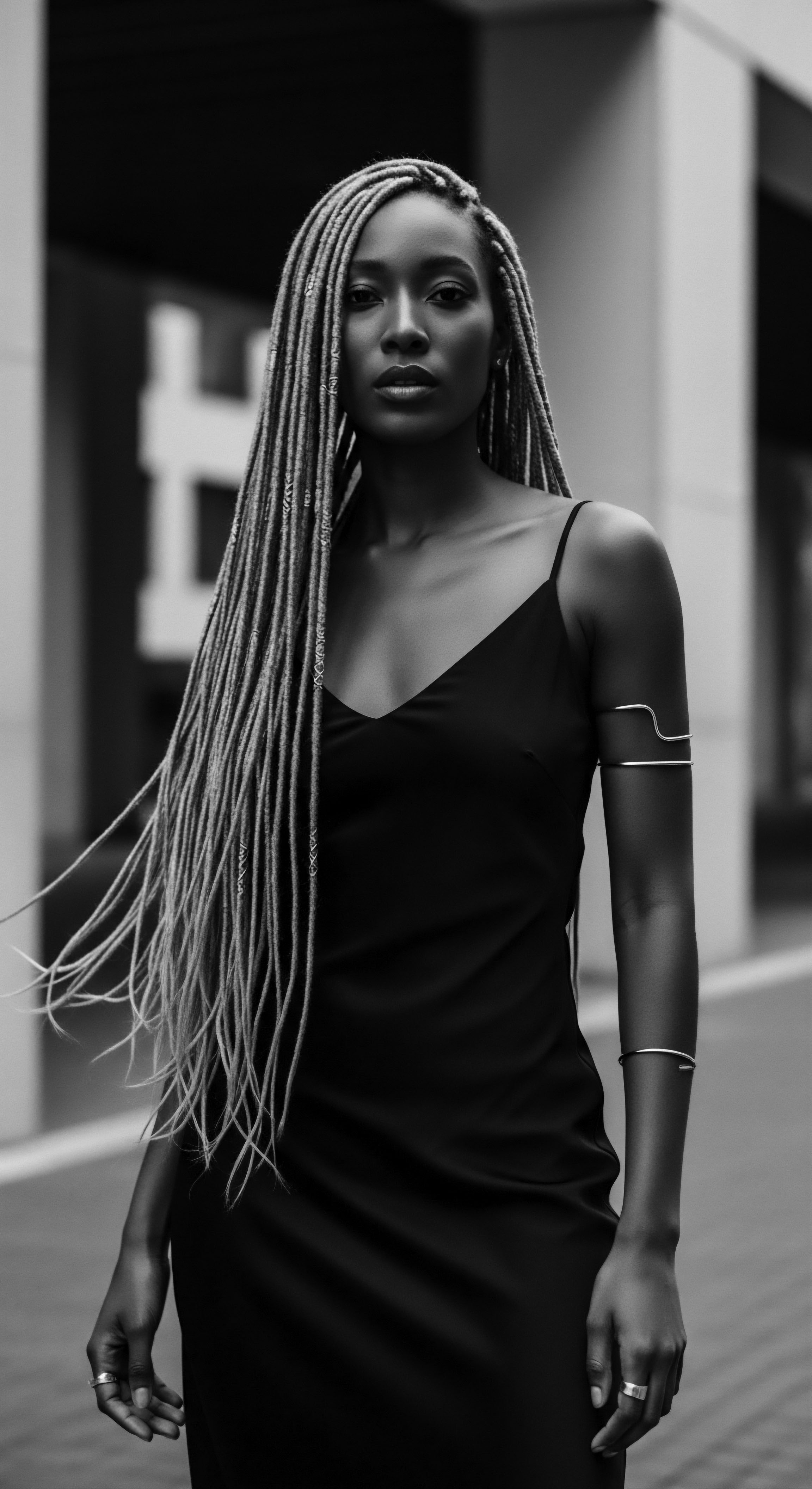
Holistic Care from Ancestral Wisdom
The concept of holistic wellness, deeply interwoven with hair care, is not a modern invention; it is a return to ancestral philosophies. Many ancient cultures, particularly in Africa and Asia, viewed hair as an extension of overall well-being, directly influenced by diet, environment, and spiritual harmony. The application of oils was often part of a broader self-care ritual, emphasizing nourishment from within and without.
For instance, Ayurvedic practices, rooted in India over 4000-5000 years ago, consider hair oiling a central component of maintaining bodily balance. These traditions utilize warm, herb-infused oils such as Coconut Oil, Sesame Oil, and Amla Oil, not only for their direct benefits to hair but also for their believed calming effects on the nervous system and ability to improve circulation to the scalp. The continuous, gentle massage during oil application is recognized today for stimulating blood flow to hair follicles, supporting healthier growth.
The rich history of Shea Butter provides another example of holistic usage. Beyond its moisturizing properties, traditionally, shea butter has been used for medicinal purposes, applied to the skin to alleviate conditions like eczema and rheumatism, and even consumed for its nutritional value. This multi-purpose application underscores a holistic view of well-being, where a single natural ingredient could serve diverse needs, from scalp health to overall physical comfort.

Nighttime Sanctuary and Bonnet Wisdom
The practice of protecting textured hair during rest, particularly at night, has roots in the observation of environmental stressors. Ancient communities recognized that hair, especially when loose, could become tangled, dry, or exposed to elements that compromise its integrity. The nighttime sanctuary, often involving protective wraps or coverings, was a practical extension of daily care.
While specific historical evidence of bonnets as we know them today might be limited, the concept of covering the head and hair for preservation is ancient. From head wraps worn for cultural significance and protection from dust and sun in various African societies to the practice of covering hair during sleep to retain moisture, the underlying principle is consistent. These coverings, often combined with an application of oils, minimized friction, preserved style, and prevented moisture evaporation from the hair shaft during hours of rest. This collective wisdom, passed through generations, informed the modern use of bonnets and silk scarves – a continuation of ancestral foresight in hair preservation.
The use of oils before wrapping hair for sleep created a sealed environment for deep conditioning. This practice ensured that the natural oils and applied emollients could penetrate the hair shaft more effectively, conditioning it overnight. This simple, yet powerful, ritual reflects an understanding of the hair’s need for sustained moisture, particularly for coiled textures.
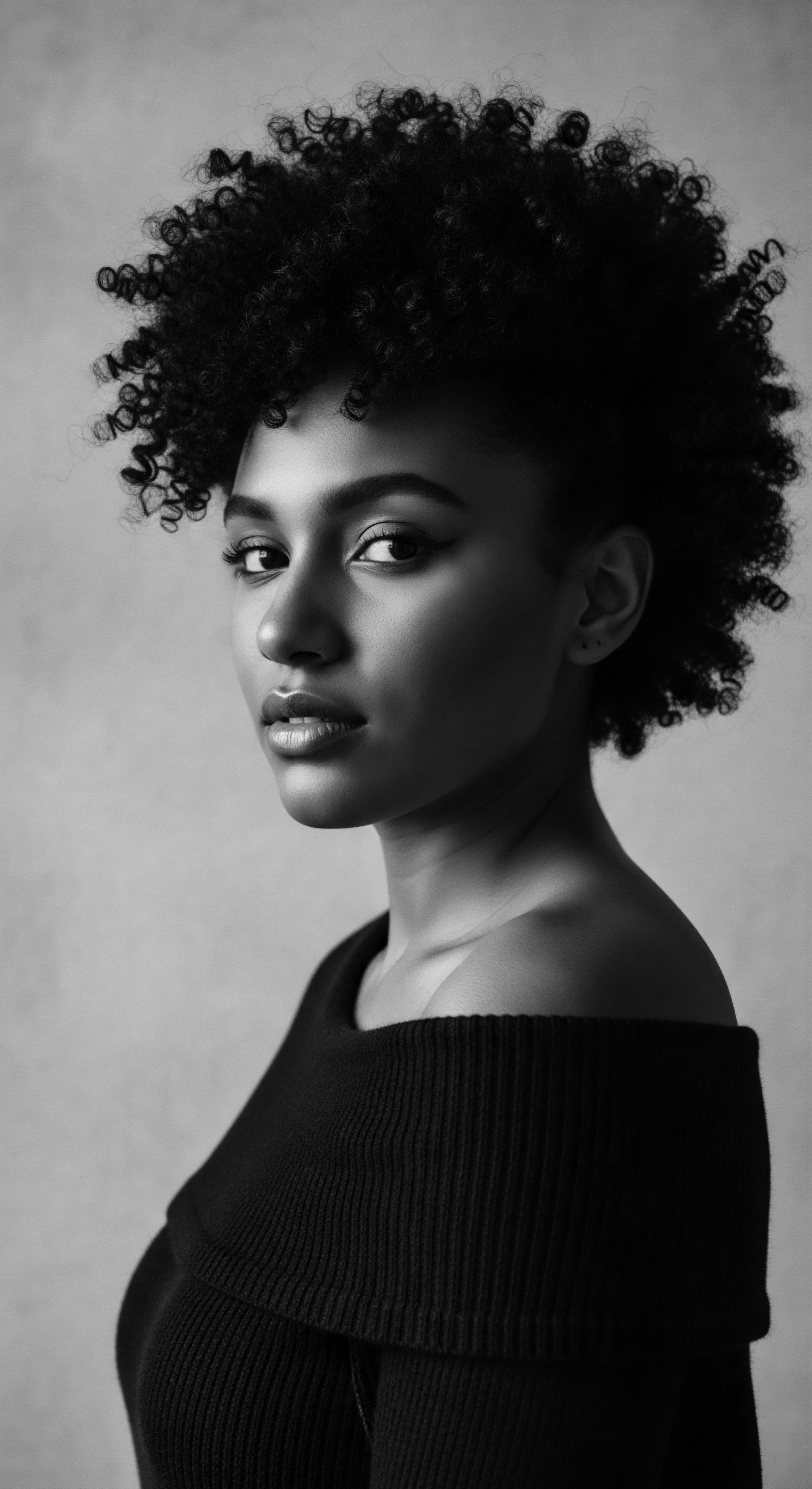
Ingredient Properties and Modern Validation
Many ancient oils, long revered in traditional hair care, find their efficacy confirmed by contemporary scientific analysis. This convergence of ancestral knowledge and modern research strengthens the legacy of these ingredients.
- Shea Butter ❉ Chemically, shea butter is rich in vitamins A and E, and beneficial fatty acids, including oleic, stearic, linoleic, and palmitic acids. These components explain its documented ability to improve skin elasticity, reduce inflammation, and offer mild UV protection (approximately SPF-6). For hair, these properties translate into deep moisturization, scalp nourishment, and a protective barrier against environmental damage. Gas chromatography-mass spectrometry of ancient Egyptian mummies’ hair, dating back 2600-3500 years ago, revealed the use of a stearic acid-rich material, which archaeological findings suggest may have been shea butter, cementing its historical role in hair care.
- Castor Oil ❉ Particularly Jamaican Black Castor Oil (JBCO) and Haitian Castor Oil, carries a lineage from Africa to the Caribbean through the transatlantic slave trade, where it became a cornerstone of Afro-Caribbean remedies. Ricinoleic acid, making up 85-95% of castor oil’s composition, is recognized for improving blood circulation to the scalp, nourishing hair follicles, and strengthening hair strands. This fatty acid also possesses moisturizing qualities and germicidal properties, protecting the scalp from fungal and microbial infections.
- Argan Oil ❉ Hailing from Morocco, where Berber women have harvested it for centuries, argan oil is high in antioxidants and vitamin E. Research notes its sebostatic (sebum regulating) and moisturizing effects, and its ability to increase hair elasticity. It is a light oil, often used to add shine and reduce frizz in textured hair.
- Coconut Oil ❉ Its high lauric acid content allows it to penetrate the hair shaft deeply, reducing protein loss. Studies suggest it provides color protection and improves tensile strength when used as a pre-wash treatment. It also exhibits antibacterial activity, supporting a clean scalp environment.
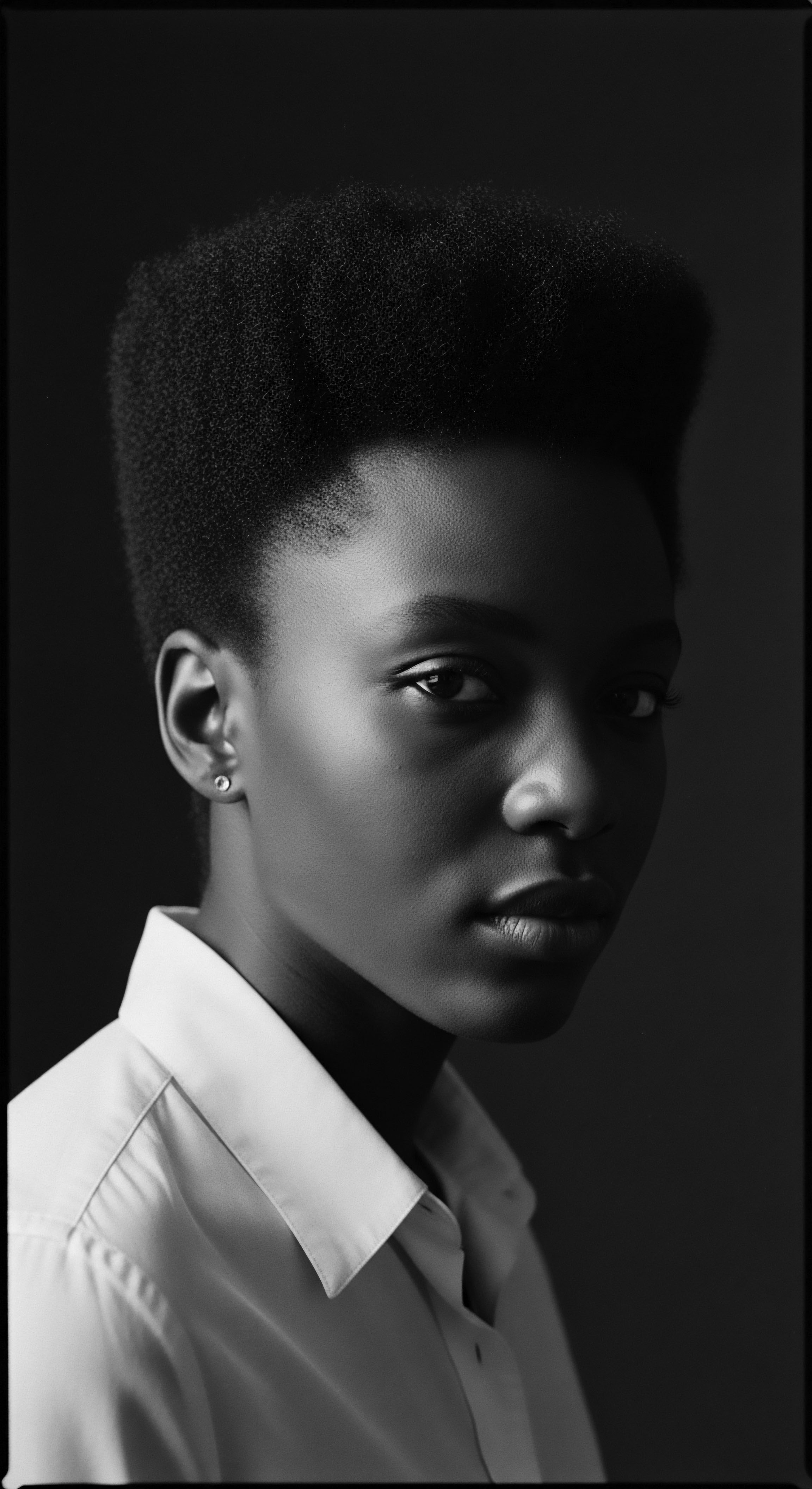
Problem Solving and Ancestral Solutions
Ancient oils were frontline solutions for common hair and scalp concerns. Dryness, breakage, and scalp irritation were addressed with direct, natural remedies. The wisdom of observation led to the identification of plants and their extracts that provided specific relief.
For instance, the anti-inflammatory and deep hydrating qualities of Batana Oil, sourced from the American palm tree, have been used for hundreds of years by indigenous groups like the Miskito people of Honduras to soothe dryness, reduce dandruff, and alleviate itchiness. Similarly, the use of Fenugreek, steeped in many Asian cultures, was noted for its proteins and nicotinic acid, beneficial for combating hair loss and dandruff, a discovery validated by its recognized anti-inflammatory and moisturizing properties today.
The long-standing techniques, passed down through generations, did not merely persist through blind tradition; they were effective. The communal knowledge and shared experiences around these oils created a robust system of hair care, adapting to diverse environmental conditions and hair needs across different communities. This collective repository of knowledge, enriched by both enduring practice and contemporary understanding, forms the very foundation of textured hair heritage.
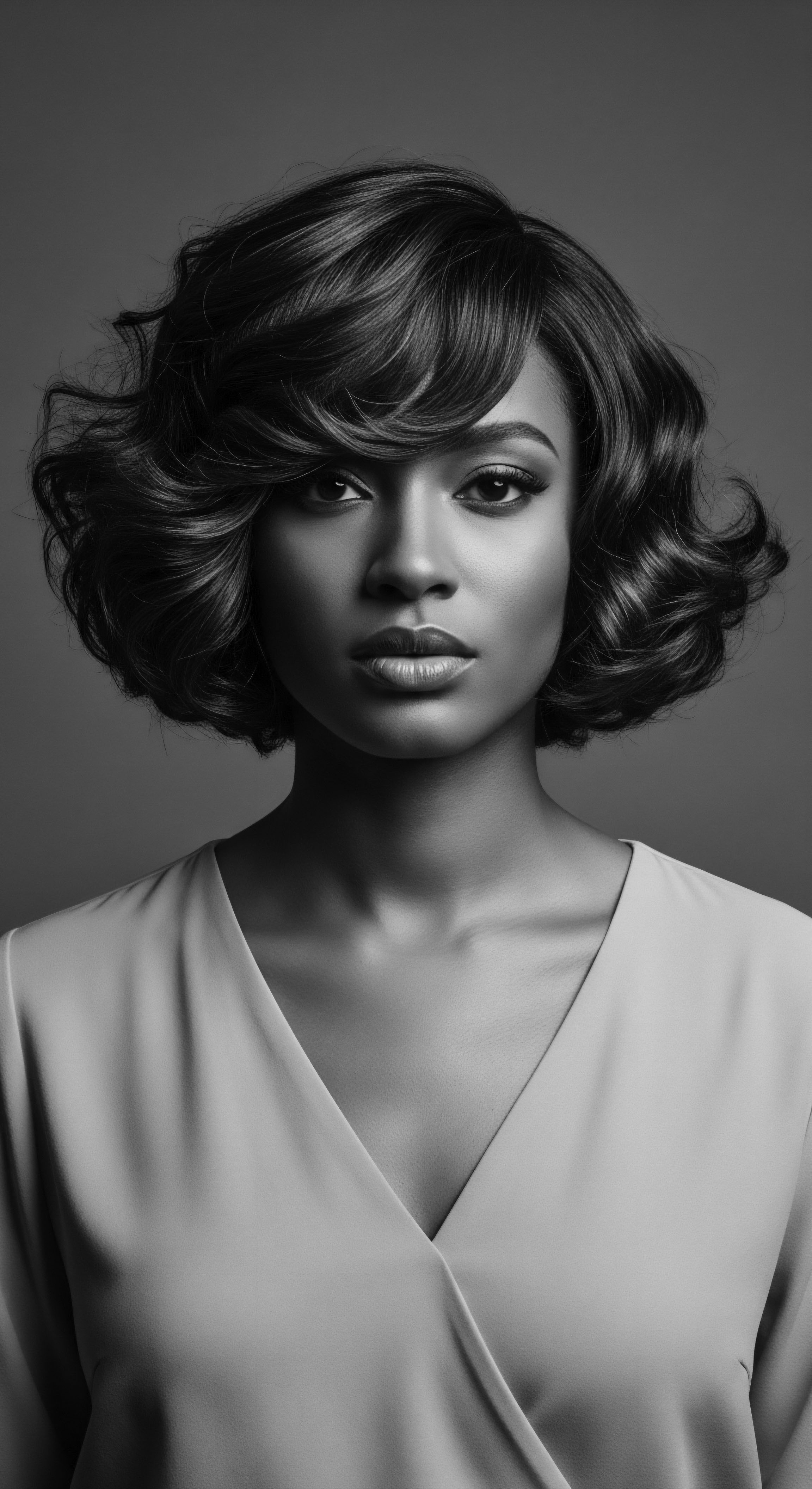
Reflection
Our exploration of ancient oils for textured hair, and the heritage that cradles them, brings us to a profound understanding. Each drop of shea butter, each whisper of argan, each deep application of castor oil is not merely a product; it is a living echo, a direct conduit to the hands that first worked these elements into hair, to the communities that nurtured these practices. This is the Soul of a Strand ❉ a recognition that our hair carries not just genetic code, but also cultural memory, passed down in every coil and curl, in every ritual of care.
The journey through time reveals that the innate needs of textured hair – its call for profound moisture, its desire for protection, its capacity for expressive styling – were understood with an intuitive depth by our ancestors. They listened to the hair, to the environment, and to the earth, creating a pharmacopoeia of plant-based remedies that still stand strong today. The continuity of these practices, from the communal oiling sessions in West African villages to the shared recipes of the Caribbean diaspora, speaks to a resilience that defies time and displacement. Our hair, therefore, becomes a tangible link to those who came before us, a reminder of their ingenuity and their unwavering spirit.
To care for textured hair with ancient oils is to participate in an unbroken lineage of self-adornment and wellness, to honor a legacy of strength and beauty. It is an act of reclamation, taking what was sometimes disparaged or forgotten and elevating it to its rightful place as a source of power and pride. The oils, then, are not just emollients; they are carriers of history, conduits of connection, and catalysts for a deeper appreciation of one’s own heritage. As we continue to learn, to grow, and to define beauty on our own terms, the wisdom of the past remains a guiding light, reminding us that the answers we seek often reside in the enduring truths held within the earth, and within our very strands.

References
- Body Care. (2021). The Shea Butter History.
- Colomas, J. (2023). Unlock Ancient Hair Care Secrets ❉ Discover Global Rituals for Lustrous Locks.
- Diop, A. (n.d.). A History of Shea Butter.
- Fabulive. (n.d.). Rediscovering Historical Hair Care Practices.
- Gallagher, D. et al. (2023). The Archaeology of Shea Butter.
- Husn Beauty. (2024). From Roots to Beard ❉ How Jamaican Black Castor Oil Transforms Grooming.
- Issa Naturale. (2024). The Timeless Tradition of Hair Oiling ❉ A Middle Eastern Beauty Secret.
- Joanna Colomas. (2023). Unlock Ancient Hair Care Secrets ❉ Discover Global Rituals for Lustrous Locks.
- Kerharo, J. (n.d.). (cited in Shea Butter – sheabutter.net).
- Kuza Products. (2023). 7 Benefits of Jamaican Black Castor Oil on Hair.
- Livara Natural Organics. (2023). Black History Month ❉ The Rich History of Our African Hair.
- OilsByNature.dk. (2024). The History and Harvesting of Organic Argan Oil ❉ From Moroccan Trees to You.
- Omez Beauty Products. (2024). The Cultural Significance of Natural Hair.
- PushBlack. (2023). Why Jamaican Black Castor Oil Is Rich in Black History.
- Reddit. (2021). No raw oils and butters vs. Traditional African hair care?.
- Sellox Blog. (2021). Ancient African Hair Growth Secrets For Healthy Hair.
- UAL Research Online. (n.d.). African hair ❉ exploring the protective effects of natural oils and silicones.
